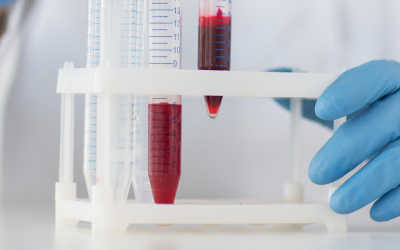
Could a Drug for Heart Disease Treat Preeclampsia?
Here is an update on studies underway.
Pravastatin, a "statin" drug (known scientifically as an HMG-CoA reductase inhibitor) inhibits a key early step required for cholesterol synthesis in the liver and is used widely for prevention of coronary artery disease. Somewhat surprisingly, it is now the subject of two clinical studies (one in the US and one in the UK) to find out whether it might be safe and useful to prevent or treat severe or early-onset preeclampsia.
Animal studies in different rat and mouse animal models, which mimic many of the key characteristics of preeclampsia, have shown that pravastatin improves several of the biochemical measures associated with severe preeclampsia in women. It also seems to improve blood pressure and fetal growth.[1-7] It is impossible to predict whether these exciting results in mice and rats will translate to either prevention or treatment of preeclampsia in women without well-designed and carefully conducted clinical studies in pregnant women.
Research is now underway that seeks to answer questions on two parallel tracks. The first addresses the question of whether pravastatin improves the health of women who already have severe disease and thus may allow their pregnancies to continue. The second will determine the proper dose to use in a study to determine whether pravastatin can prevent preeclampsia from occurring in the first place.
More specifically, the first study, underway in the UK, aims to determine whether pravastatin improves biochemical markers of preeclampsia (the same ones which are improved in the animal studies) in women who already have early-onset severe disease. The British study is titled "StAmP [Statins to ameliorate early-onset preeclampsia]" (www.controlled-trials.com ISRCTN23410175). The US study, to determine the proper dose of pravastatin in order to design a subsequent preeclampsia prevention study, is titled "Pravastatin for prevention of preeclampsia" (www.ClinicalTrials.gov NCT01717586).
Why are these studies just now taking place?
When statins were originally marketed in the 1980s, they were designated pregnancy category X by the FDA because there was no known benefit at the time to outweigh any potential risk and because there was theoretical potential for teratogenicity (malformation of the embryo). By definition, FDA category X signifies that studies in animals or humans have demonstrated fetal abnormalities or there is positive evidence of human fetal risk based on adverse reaction data from investigational or marketing experience, and the risks involved in use of the drug in pregnant women clearly outweigh potential benefits.
Because cholesterol is a component of cell membranes, inhibition of its synthesis could potentially interfere with embryonic or fetal development for teratogenicity and result in birth defects. Early reviews of early pregnancy statin exposures reported spontaneously, mostly to the FDA, included approximately 70 well-documented cases with 22 structural birth defects, some severe and in worrisome patterns.[8,9] While quite concerning, it is difficult to assess the actual level of risk without comparison to a control group of women not exposed to statins. Further, none of these abnormalities in these reports occurred following pravastatin. A separate, similarly uncontrolled series of 134 cases of inadvertent early pregnancy lovastatin and simvastatin exposures reported to the manufacturer showed no excess of either poor pregnancy outcome or birth defects; of note, both of these drugs cross the placenta more so than pravastatin.[10] Despite this, the X categorization for pravastatin was not questioned or adequately investigated until now because there was no known reason to use statins in pregnancy.
Several studies in the last decade have attempted to detect an increased risk of birth defects that might be related to statin drug use in early pregnancy.[8-13] Three studies examined rates and types of birth defects in a total of 377 women who had taken these drugs during the first trimester.[11,12,14] Across these studies, there was no higher incidence or specific pattern of birth defects. Using a different approach, researchers reviewed the pattern of abnormalities in all 22 cases with statin exposures that were included in two very large birth defects databases; there was no evidence to link statin exposure with any pattern of birth defects, specifically failing to confirm the sorts of birth defects suspected from the original reports to the FDA.[13] Despite their limited size, when taken together, the findings from these studies support the lack of teratogenicity of statins in general and pravastatin in particular. This latter more significant lack of teratogenicity may be due to pravastatin's relatively low potency, rapid elimination by the mother, and its limited ability to cross the placenta (from mother to fetus).[15] Whether these encouraging conclusions following early or brief exposures would hold up with widespread use or with more extended exposure over the course of pregnancy is uncertain.
Where we are today
As of today, the available human and animal data do not support pravastatin being a teratogen, that is an agent that would cause malformation of the embryo, despite its current FDA classification within the X group category. Compelling animal data suggest that it might have benefit for the prevention or treatment of severe or early-onset preeclampsia, a condition for which we have no proven, effective therapies. Despite the many unknowns, it is unlikely that we will be able to evaluate either the benefits or risks of this potential treatment without well designed clinical research in pregnant women, conducted under carefully-controlled conditions by skilled clinical-investigators. The first of these opportunities is now at hand.
- Costantine M, Tamayo E, Bytautiene E, et al. Using pravastatin to improve the vascular reactivity in a mouse model of soluble Fms-like tyrosine kinase-1-induced preeclampsia. Obstet Gynecol 2010;116:114-20.
- Fox KA, Longo M, Tamayo E, et al. Effects of pravastatin on mediators of vascular function in a mouse model of soluble Fms-like tyrosine kinase-1-induced preeclampsia. Am J Obstet Gynecol 2011;205:366.e1-5.
- Ahmed A, Singh J, Khan Y, Seshan SV, Girardi G. A new mouse model to explore therapies for preeclampsia. PLoS One 2010;5:e13663.
- Singh J, Ahmed A, Girardi G. Role of complement component C1q in the onset of preeclampsia in mice. Hypertension 2011;58:716-24.
- Kumasawa K, Ikawa M, Kidoya H, et al. Pravastatin induces placental growth factor and ameliorates preeclampsia in a mouse model. PNAS 2011;108:1451-5.
- Bauer AJ, Banek CT, Needham K, Gillham H, Capoccia S, Regal JF, Gilbert JS. Pravastatin attenuates hypertension, oxidative stress, and angiogenic imbalance in rat model of placental ischemia-induced hypertension. Hypertension 2013;61:1103-10.
- Saad AF, Kechichian T, Yin H, Sbrana E, Longo M, Wen M, Tamayo E, Hankins GD,Saade GR, Costantine MM. Effects of Pravastatin on Angiogenic and Placental Hypoxic Imbalance in a Mouse Model of Preeclampsia. Reprod Sci. 2013 Jun 7. [Epub ahead of print].
- Kazmin A, Garcia-Bournissen F, Koren G. Risk of statin use during pregnancy: a systematic review. J Obstet Gynaecol Can 2007;29:906.
- Edison R, Muenke M. Mechanistic and epidemiologic considerations in the evaluation of adverse birth outcomes following gestational exposure to statins. Am J Med Gen 2004;131A:287.
- Manson JM, Freyssinges C, Ducrocq MB, Stephenson WP. Postmarketing surveillance of lovastatin and simvastatin exposure during pregnancy. Reprod Toxicol. 1996 Nov-Dec;10(6):439-46. PubMed PMID: 8946557.
- Ofori B, Rey E, Berard A. Risk of congenital anomalies in pregnant users of statin drugs. Br J Clin Pharmacol 2007;64:496.
- Taguchi N, Rubin ET, Hosokawa A, Choi J, Ying AY, Moretti ME, Koren G, Ito S. Prenatal exposure to HMG-CoA reductase inhibitor: effects on fetal and neonatal outcomes. Reprod Toxicol 2008;26:175.
- Petersen EE, Mitchell AA, Carey JC, Werler MM, Louik C, Rasmussen SA, et al. Maternal exposure to statins and risk for birth defects. Am J Med Genet A 2008;146A:2701-5.
- Winterfeld U, Alligno A, Panchaud A, et al. Pregnancy outcome following maternal exposure to statins: a multicentre prospective study. Br J Obstet Gynaecol 2013;120:463-71.
- Zarek J, Degorter MK, Lubetsky A, Kim RB, Laskin CA, Berger H, Koren G. The transfer of pravastatin in the dually perfused human placenta. Placenta. 2013;34:719-21.
Jason G. Umans, MD, PhD is Scientific Director of the Biomarker, Biochemistry, and Biorepository Core Laboratory at MedStar Health Research Institute, Director of Research Education and Training for the Georgetown-Howard Universities Center for Clinical and Translational Science, and serves as Associate Professor of both Medicine and of Obstetrics and Gynecology at Georgetown University. Dr. Umans, an internist, nephrologist, and clinical pharmacologist is also an American Society of Hypertension (ASH) Specialist in clinical hypertension who has devoted most of his efforts over the past two decades to the care of medically-complex pregnant women and to research focused on preeclampsia and on drug therapy in pregnancy. He received his MD and PhD in Pharmacology from Cornell University, and completed clinical training in Medicine and Nephrology at the University of Chicago. Prior to joining MedStar, he held faculty appointments at Cornell, Chicago, and Georgetown. He is internationally recognized as an expert in medical disorders during pregnancy, particularly hypertension and kidney disease. His research in clinical pharmacology focuses on pharmacokinetic and pharmacodynamic studies in pregnant women. Additional research interests include vascular mechanisms and risk factors for hypertension, kidney, and cardiovascular disease. He has published approximately 150 original papers on obstetric-fetal pharmacology, preeclampsia, pharmacokinetic modeling, drug assay development, neuropharmacology, vascular and renal physiology,, inflammatory mechanisms, and cardiovascular and metabolic diseases. He has written book chapters and review articles, and has spoken widely on hypertension and renal disease in pregnancy,and on pharmacotherapy in pregnancy and in renal failure.
Related Articles

Your story is needed to improve outcomes for moms like you. Add your voice to critical preeclampsia research to ensure that every story is heard.

Frequently asked questions about the Preeclampsia Registry, a patient-driven registry and biobank.

The Preeclampsia Foundation offers research funding, study recruitment, and other patient engagement services to researchers.

We provide research grant funding to advance progress towards detection, prevention, or treatment of preeclampsia, HELLP syndrome, and other hypertensive disorders of pregnancy.

Hypertensive disorders of pregnancy significantly increase your risk of developing long-term heart problems. A careful review of blood pressure elevations during and after pregnancy may assist in iden...

Hypertensive disorders of pregnancy (HDP) can affect different groups of women in different ways, and even though we know this happening, we don't fully understand why. There are many factors, like bi...

There is growing evidence that studies examining pregnancy and its complications need to start early within the pregnancy to fully understand the nature of preeclampsia. Key gestational milestones, wh...

It is known that chronic hypertension and high BMI (body mass index) are risk factors for hypertensive disorders of pregnancy (HDP). Studies documenting this risk have usually assessed blood pre...

Several biomarker tests are under development to predict or diagnose preeclampsia. While none of these tests are yet widely accepted in U.S. clinical practice, two FDA-approved tests are available in...

